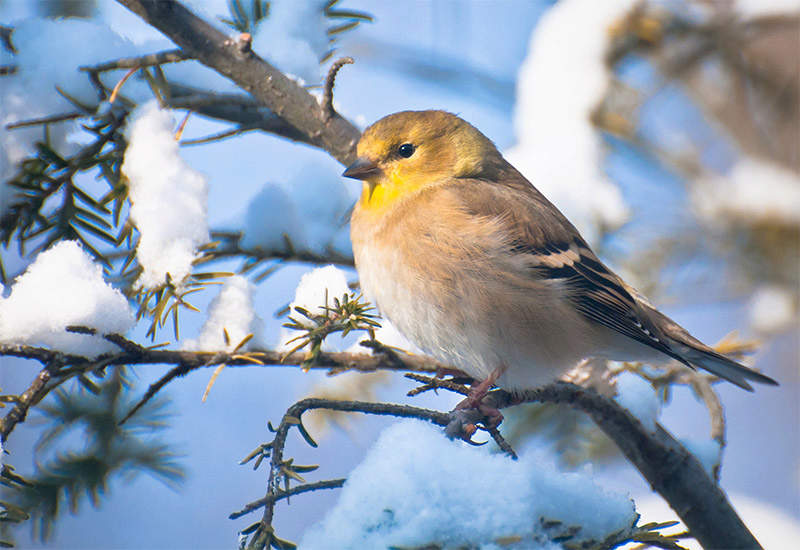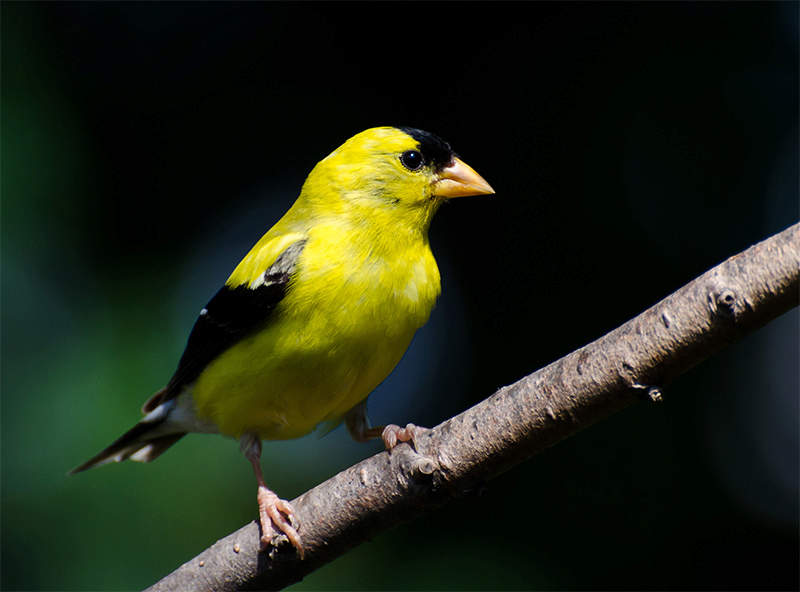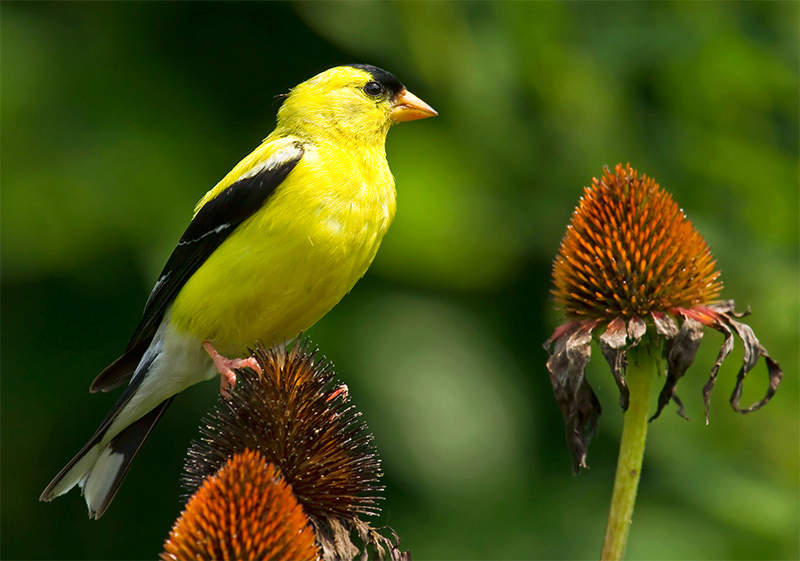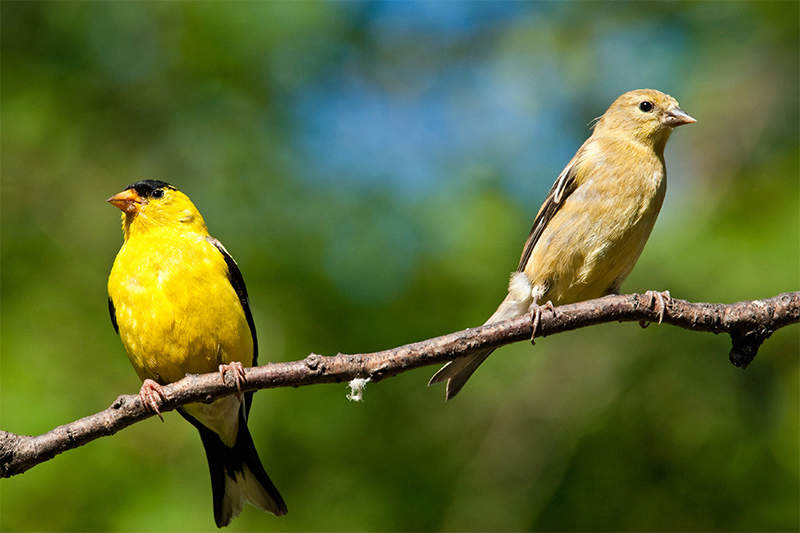Featured Birds: American Goldfinches
Most of the birds we see at feeders in winter are in drab plumage. Male cardinals have red feathers, but the tip of each feather is brown when it first grows in in late summer. As winter proceeds, the dull tips wear off and more and more brilliant red is revealed.
That kind of feather-wear is how most birds assume their prettiest colors. The dull tips when feathers are new help insulate during early and mid-winter, and the brilliant color revealed as winter melts into spring becomes increasingly important for courtship and territorial displays.
American Goldfinches are an exception to this system. Their winter feathers are exactly what they appear to be: dull feathers through and through. In early spring, goldfinches replace their body feathers one by one, growing new, brilliant breeding feathers that they’ll keep until late summer or early fall.

Goldfinches are mystifying in another way, too: their migration is not well understood. Some individuals wearing US Fish and Wildlife Service bands have later been trapped over a thousand miles away, so they’re certainly a migratory species. Yet American Goldfinches can be found throughout the winter wherever the low temperature isn’t averaging colder than 0 degrees Fahrenheit, and small groups may be found all winter even when the temperature is colder than that over many nights. They may remain in winter in some of the northern reaches of their breeding range, and over much of the continent they may be seen year-round.
People lucky enough to have goldfinches in winter know spring is coming when a patchwork of brilliant feathers starts showing through the drab winter plumage. Pleasant as these hardy birds are in winter, American Goldfinches are their most brilliant during the season of abundance, summer, when watching them can make us feel as rich as if their plumage was real gold.

Most birds begin nesting within days of arriving after spring migration, but again, American Goldfinches are the exception. Some of them may pair up in spring, but they don’t start to nest until late June or July. If they lose their eggs or young, they may renest as late as early September. This delayed nesting may be due to their unusual late winter/early spring molt, and also is probably related to their use of the fibers of late-blooming downy weed seeds to construct their nests; they also use these seeds to feed the chicks.
American Goldfinches are strict vegetarians, feeding on a variety of seeds and virtually no insects or other animal-based foods. They focus on fairly small seeds, visiting feeders year-round for sunflower seeds (especially the soft-shelled black oil type) and nyger, also called thistle. In summer, they gravitate to the downy seeds on such plants as thistle and milkweed.

Goldfinches never nest in birdhouses; they build their nest in a shrub or sapling. They like open areas rather than forests, but seldom nest in backyards unless a good supply of their favorite plants is available. Their favorite plant of all, thistle, is not quite so popular with most homeowners because it’s so prickly, but goldfinches also eat seeds from asters, purple coneflowers, sunflowers, zinnias, black-eyed susans, bachelor buttons, and salvias. Late winter is an excellent time to start growing these seeds indoors to plant as warm weather arrives.
Most fruit- or seed-eating songbirds feed their young caterpillars and other high-protein foods, but goldfinches feed their young the same thing the adults eat, seeds, only in regurgitated form. This diet, exactly what baby goldfinches need to thrive, is too low in protein for nestlings of other species. Indeed, when a cowbird lays her egg in a goldfinch nest, the baby cowbird never survives through fledging.

Male goldfinches live longer than females, and in most populations outnumber females about 3 to 2. Molting new feathers is extremely energy-intensive. It appears that producing eggs soon after molting, and then molting all over again soon after the young fledge, is harder on females than males, which may explain why males live longer.
Goldfinches are so popular that they’ve been chosen as the state bird of three states spanning the continent: Washington, Iowa, and New Jersey.





